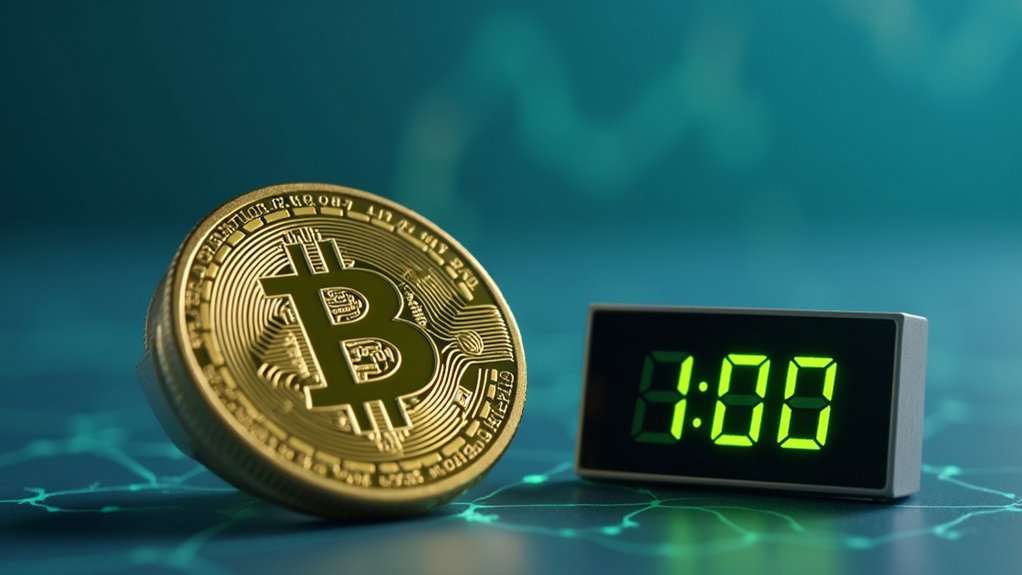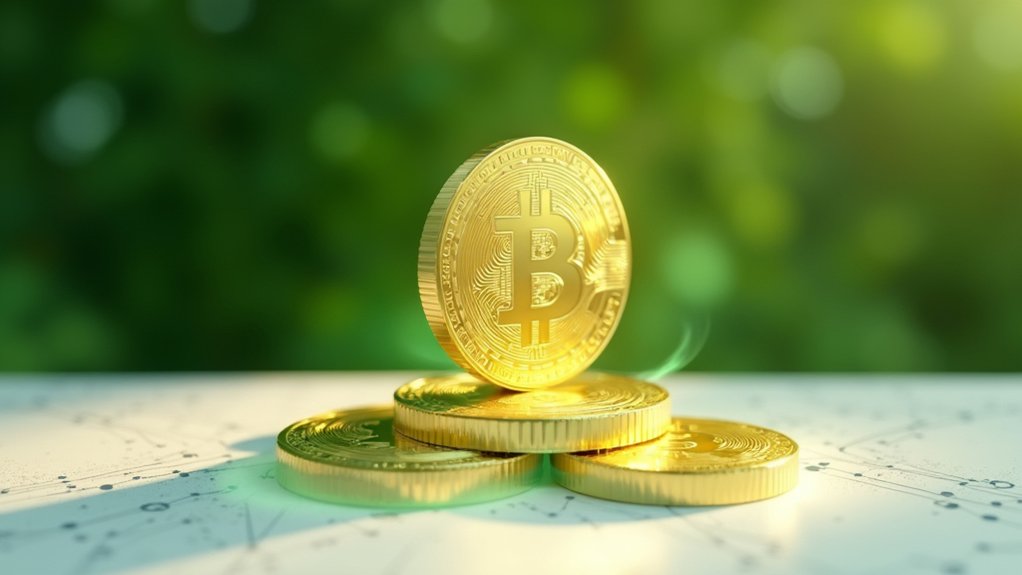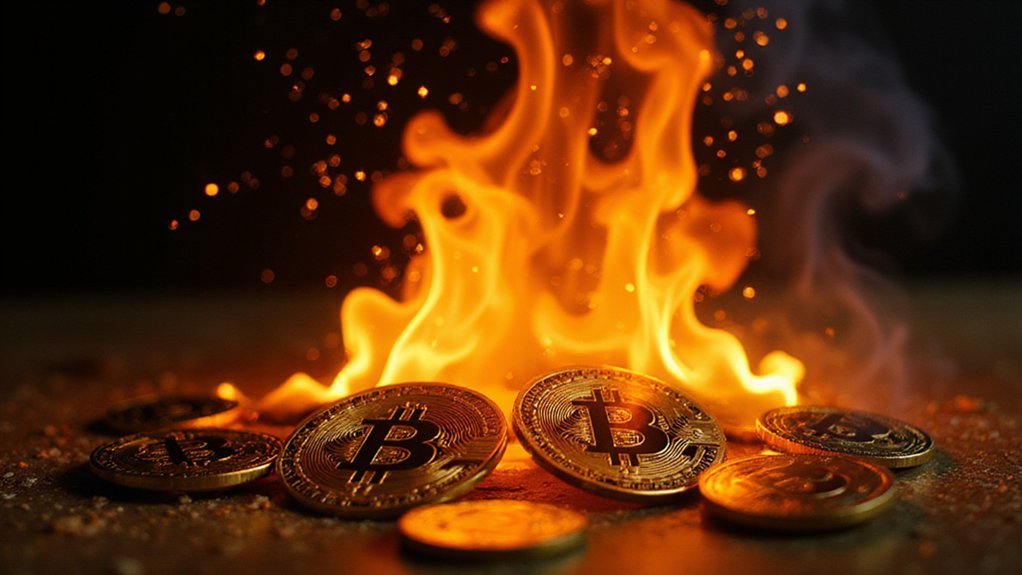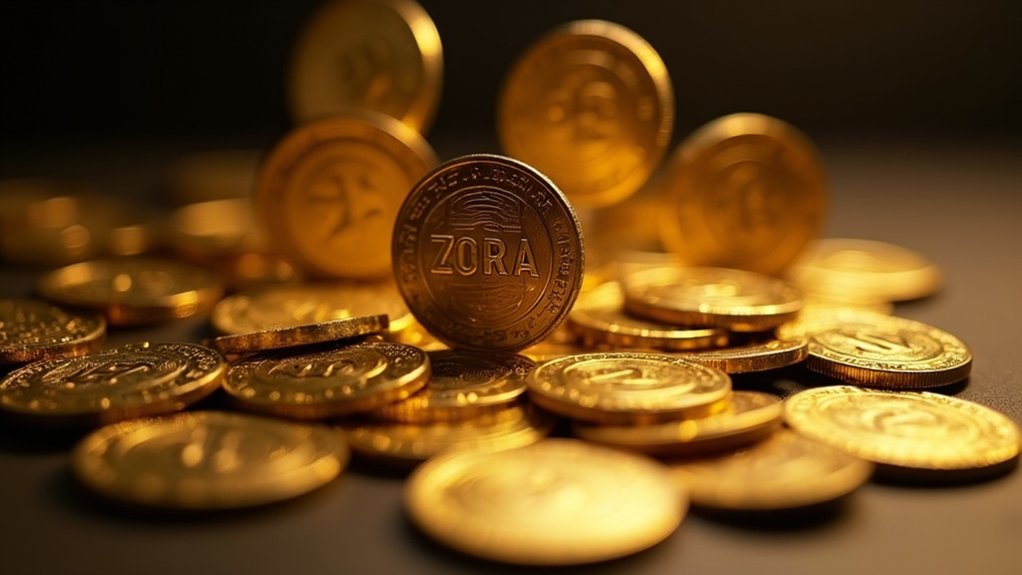Stablecoins offer a fascinating compromise in the crypto ecosystem—digital assets engineered to maintain steady value amid market volatility. These tokens come in three flavors: fiat-backed (USDC), crypto-collateralized (DAI), and algorithmic variants (with their occasional spectacular implosions). They serve as DeFi’s functional backbone, enabling everything from cross-border transfers to lending protocols without traditional banking infrastructure. While seemingly straightforward, their stability mechanisms harbor inherent contradictions worth understanding before entrusting them with your financial future.

Why would anyone in the cryptocurrency ecosystem—notorious for its volatility and potential for astronomical gains—deliberately create tokens designed to maintain a constant value?
The answer lies in practicality: while speculative investors might thrive on Bitcoin’s roller-coaster valuation, functional financial systems require predictability.
Stablecoins elegantly bridge this divide, offering blockchain’s innovative potential without its characteristic price gyrations.
Stablecoins maintain their stability through various mechanisms, each with distinct risk profiles.
Fiat-backed variants like USDT and USDC operate on a straightforward premise: for each token issued, an equivalent dollar (ostensibly) sits in reserve.
Crypto-backed alternatives such as DAI take a more sophisticated approach, utilizing over-collateralization to weather market fluctuations.
Meanwhile, algorithmic stablecoins—TerraUSD being the cautionary tale par excellence—employ complex supply-adjustment protocols that, as history has demonstrated, can spectacularly unravel under stress.
The utility of these stabilized tokens extends well beyond mere price consistency.
They serve as the lifeblood of decentralized finance, facilitating lending protocols, providing liquidity pairs, and enabling cross-border transactions without traditional banking infrastructure.
Their capacity to function as reliable stores of value while maintaining blockchain’s efficiency offers particular advantages in regions plagued by hyperinflation or restrictive capital controls.
Regulatory bodies worldwide are increasing oversight of stablecoins to ensure compliance with financial laws and protect investors from potential risks.
In advanced DeFi ecosystems like PancakeSwap, stablecoins are essential components of liquidity solutions that power the multi-billion dollar trading volumes seen in modern decentralized exchanges.
Nevertheless, stablecoins aren’t without inherent contradictions and risks.
The very stability mechanisms that define them introduce potential points of failure, whether through reserve insolvency (a persistent concern with Tether) or algorithmic design flaws that can trigger death spirals when confidence evaporates.
Furthermore, their increasing adoption has attracted regulatory scrutiny that may fundamentally reshape their operation.
Most stablecoins are non-interest bearing assets, meaning holders do not receive returns on their investment despite sacrificing potential gains from volatile cryptocurrencies.
For cryptocurrency novices seeking safer entry points into digital assets, stablecoins offer a compelling compromise—participation in blockchain’s infrastructure without direct exposure to its notorious volatility.
Yet potential users should approach with clear-eyed recognition that stability in crypto remains relative, with even the most established stablecoins occasionally deviating from their pegs during market turbulence.
In the ever-evolving cryptosphere, even “stability” comes with asterisks.
Frequently Asked Questions
How Do Stablecoins Differ From Traditional Banking Services?
Stablecoins dramatically outperform traditional banking in several critical metrics: they offer near-instant settlement (versus days), substantially lower transaction fees (0.1-0.3% compared to 2-5%), 24/7 accessibility (banks, astonishingly, still observe weekends), and seamless cross-border capabilities.
Operating on blockchain technology, they provide enhanced transparency and automated reconciliation while potentially reducing operational costs by up to 80%.
Their $227 billion market capitalization suggests they’re hardly a passing phenomenon in financial evolution.
Can Stablecoins Be Used for International Remittances?
Yes, stablecoins are increasingly utilized for international remittances, offering compelling advantages over traditional methods.
They reduce transaction costs by 1-3%, provide faster settlement times (goodbye, five-day waiting periods), and increase financial inclusion in underbanked regions.
Companies like MoneyGram have already partnered with blockchain platforms to expand stablecoin-based remittance services globally.
While regulatory uncertainty and security concerns persist, the BRICS nations are actively adopting these digital assets to address cross-border payment inefficiencies that have long plagued the global financial system.
What Happens to Stablecoins During Major Crypto Market Crashes?
During major crypto market crashes, stablecoins typically experience a counter-intuitive surge in demand.
Investors flee volatile assets for the relative safety of dollar-pegged havens, increasing stablecoin market capitalization—as evidenced by the 10% growth during February 2025’s downturn.
This flight-to-stability phenomenon has pushed the total stablecoin market cap to unprecedented heights (exceeding $224 billion).
Nevertheless, these “stable” vessels aren’t immune to turbulence; de-pegging events remain an ever-present risk, as TerraUSD’s collapse rather spectacularly demonstrated.
Are Stablecoins Regulated by Government Financial Authorities?
Stablecoins exist in a regulatory patchwork that’s rapidly evolving.
Currently, most are regulated inconsistently, if at all—though that’s changing.
The U.S. Congress is considering bipartisan legislation (the GENIUS and STABLE Acts) to establish thorough frameworks, while state laws already govern some issuers.
The SEC may assert jurisdiction when stablecoins resemble securities.
This regulatory ambiguity (something traditional finance abandoned decades ago) persists despite executive orders intended to position America competitively in digital finance.
Can I Earn Interest or Yield by Holding Stablecoins?
Yes, stablecoins can generate passive income through various interest-earning mechanisms.
Centralized finance platforms like Nebeus offer particularly attractive rates—up to 12.85% APY for USDT and USDC deposits (rates that would make traditional bankers choke on their morning coffee).
Different platforms present varying opportunities: Nebeus typically leads the pack, followed by Vauld and YouHodler, with NEXO and BlockFi trailing behind.
USDT generally commands the highest interest rates, though these yields fluctuate with market conditions and regulatory developments.









